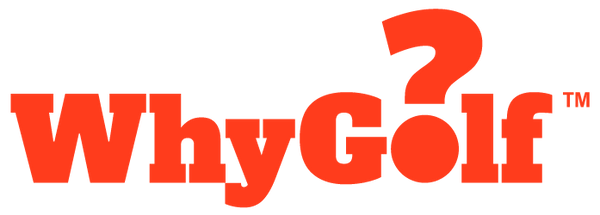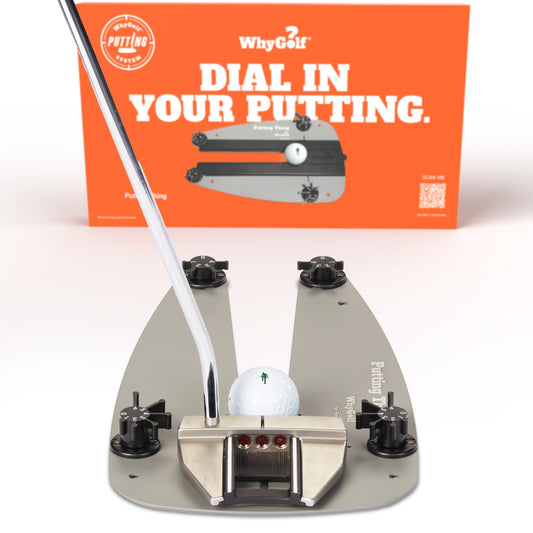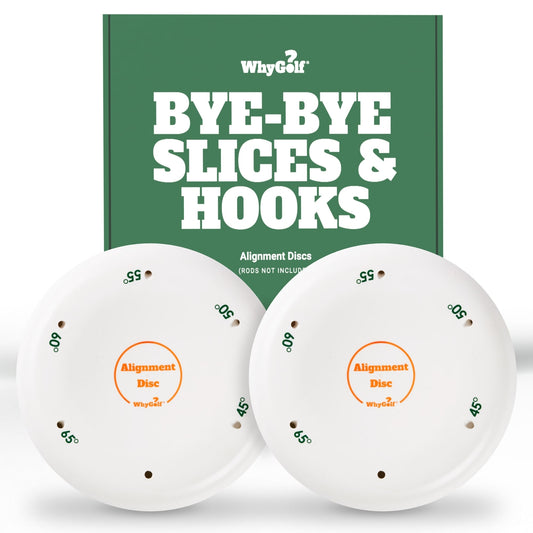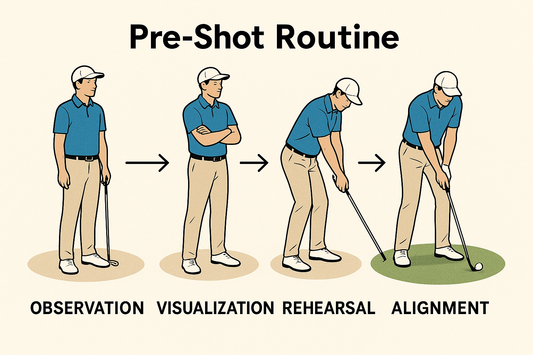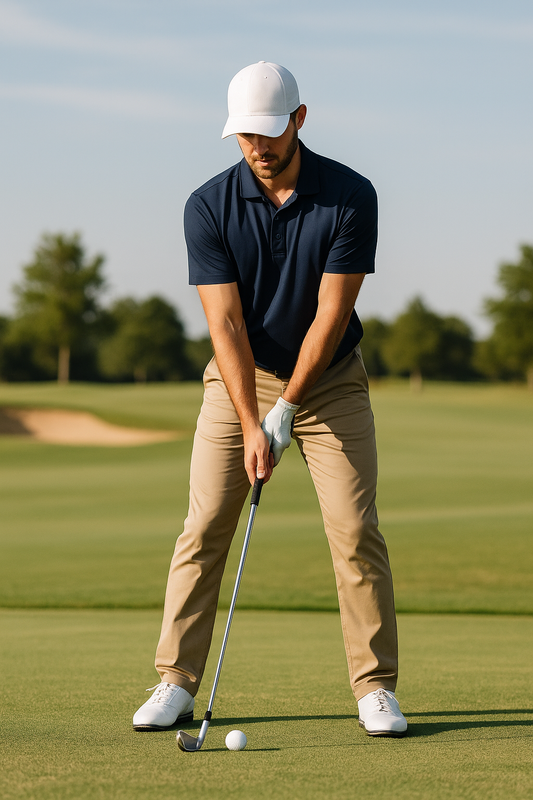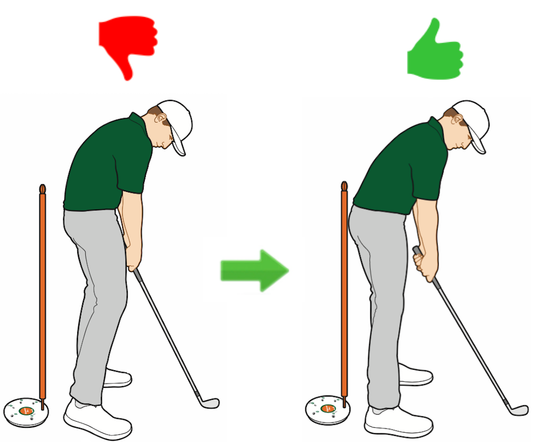Author: WhyGolf WhysGuy
We want to preface this guide with the acknowledgment that neither WhysGuy nor anyone from the WhyGolf team claims to know everything about the golf swing. We don’t want anyone to treat what we say here as gospel. While much of what we’ll say is a reflection of decades of dialogue with PGA instructors and players, we’re always learning and we understand that knowledge about the sport of golf will continue to evolve over time.
In this post, WhysGuy will cover:
- Why it's important to be able to hit a fade in golf.
- Practical adjustments you can make to start hitting fades.
- How to set up the WhyGolf Alignment Disc to practice hitting fades.
Why is it Important to Know How to Hit a Fade in Golf?
It's likely that most reading this don't have trouble fading the ball. For those of you who want to perform an exorcism on your slice, click here. Provided that your fade isn't pathological (i.e., spinning excessively), fades can be quite useful. Here's why:
Key Benefits to Fades in Golf:
1. For most golfers, fades are easier to control relative to draws since fades usually require less clubface rotation through the ball.
2. Fades spin more than draws. More spin will allow you to land your approach shots softly on greens, allowing you to be more aggressive from fairways.
3. Fades will help you attack tucked-right pins safely (left pins for left-handers). Instead of having to aim directly at a right pin, you'll be able to aim towards the center of the green and use fade spin to get closer to the hole.
So, What is a Fade in Golf?
For a right-handed player, a fade in golf describes an airborne golf ball that ideally starts to the left of our target and curves back to our target.
If you haven’t already, we highly recommend reviewing our post on the Ball Flight Laws for a refresher on the relationship between clubface angle and swing path and how to hit the 9 ball flights. Put simply, a club's face angle at impact primarily determines the starting direction of the golf ball and the resulting curve reflects the difference between your swing path and face angle at impact.
How to hit a fade in golf (for right-handers):
- The club’s face angle at impact must be to the left of the target (so the ball starts to left of the target).
- Swing path needs to be slightly left of face angle, which will produce fade spin.
How to Hit a Fade in Golf - 4 Easy Steps
1. Align Feet and Shoulders Left of Target
- Since you'll need your swing path to the left (for right-handers) of the target at impact, we recommend that you align your feet and shoulders to the left of your target at setup.
- Your swing path will naturally follow the direction in which your body aims - aim left, swing left.
2. Move Ball Position Forward Slightly
- When you move the ball forward in your stance, your swing path will naturally come more from the outside, which will help you hit a fade.
- Don't be afraid to play around with your ball position! If you move the ball forward a few inches but still are struggling to hit the fade, don't be afraid to try playing the ball off your front heel.
3. Get to Your Left Side at Impact
- If you don't get your pressure to your left side at impact, it's easy to end up stalling with your lower body and hitting the dreaded pull-hook. The hook will happen because your arms and wrists will turn over, causing your clubface angle to be aimed well left of the target at impact with a neutral swing path.
- If you're struggling to get to your left side at impact, the Pressure Plate can be a useful tool to feel a proper pressure shift.
4. Swing Left After Impact
- With the Alignment Disc, you can place alignment rods at specific angles to facilitate a swing path and shot shape of your choosing.
- For many golfers, practicing with a reference point (rods) enables them to better feel where the clubhead is and should be throughout the swing.
- See the adjacent illustration for a visual.
How to Hit a Fade in Golf with the Alignment Disc
- Set the Alignment Disc about a club-length from the ball and a foot inside the target line (see picture).
- Place an Alignment Rod in the disc and ensure that the angle of the alignment rod roughly matches the angle of your club's shaft at address.
- Take a few slow practice swings to feel your new fade swing path.
- If you hit shots in this position and your ball isn't fading, move the Alignment Disc closer to the target line. This will move your swing path even farther out-to-in.
- Repeat for a few shots until you get the feel, then apply the feel to regular range shots.
How to Hit a Fade In Golf - Key Takeaways:
- A fade in golf happens when your clubface angle is slightly open to your swing path at impact.
- To learn how hit a fade, we recommend making changes to your setup before making further changes to your golf swing.
- The WhyGolf Alignment Disc can be a useful tool to help you feel an out-to-in swing path.
Ready to make an investment in your golf swing? Learn more about how the Alignment Disc can help you with your swing plane here.
What are golf's Ball Flight Laws?
Ball Flight Laws explain the 9 ball flights in golf and the impact conditions necessary to hit each of the ball flights.
How would I hit a fade in golf?
There are a few essential tweaks you may make to your technique to learn how a fade. To induce an out-to-in swing path, aim somewhat left of your target (for right-handed golfers). Finally, to achieve the required left-to-right spin on the ball, keep your clubface slightly open at impact. Practicing these modifications and fine-tuning your technique can help you improve the ability to strike a fade consistently.
How would I hit a slice?
To hit a slice that ends up at your target, you want your clubface to be aimed where you want the ball to start. To make the ball curve significantly to the right, you will need your swing path to be much farther left of your face angle at impact. You can accomplish this by aligning your shoulders and feet well to the left of your target.
What are the fundamentals to learning how to hit a fade?
Understanding and implementing the principles is critical when learning how to hit a fade. First, you want to align your shoulders and feet left of the target (right of target for lefties). Next, make sure you get your weight and pressure to your lead side before impact. Otherwise, you'll hang back and your swing path will creep to the right of the target. The last is ensuring you keep track of your progress with the right training tools. If you want to learn how to hit a fade quickly, consider using alignment rods to feel your swing path moving out-to-in relative to your target.
How much does clubface angle at impact affect the ball's starting direction?
For full shots, club face direction at impact is responsible for 75-95% of the ball's initial starting direction.
However, as we move closer to the green, your club path becomes more and more responsible for your ball's initial starting direction. In bunkers, for example, your club path is responsible for most of your ball's starting direction since the club usually doesn't make direct contact with the golf ball (sand pushes the ball out of the bunker).
Is a draw or fade in golf better?
Draws and fades both have their own benefits and drawbacks. There are times on the course where a draw will make more sense than a fade and vice-versa. If you're interested, check out our post on Draws vs. Fades where we compare and contrast the two ball flights.
Should I adjust my setup or swing to learn how to hit a fade?
If you're looking to learn how to hit a fade, making adjustments to both your setup and swing can be beneficial. The easiest way to change your swing path is to do it by adjusting your setup. Move the ball slightly forward in your stance (this will usually move your swing path at impact farther left (right for lefties) and aim left of the target with your feet and shoulders. Furthermore, practice maintaining a slightly open clubface relative to your swing path at impact to achieve the desired left-to-right ball flight. By making these adjustments to both your setup and swing technique, you can increase your chances of hitting a controlled fade shot. Remember, consistent practice and experimentation will help you find the adjustments that work best for your game.
How do I learn how to hit a fade in golf?
Once you understand the basic ideas outlined above in the article, it's all about practice. Make sure you allocate a few minutes every range session toward emphasizing your out-to-in swing path and ensuring that your ball is starting left (right for lefties) of your target. If you're still having trouble, consider moving the ball farther forward in your stance and aiming farther left with your feet (opposite for lefties). It's important to exaggerate this if needed. If you're still having trouble with learning how to hit a fade, make sure you're getting your pressure and weight to your lead side well before impact.
Check Out Our YouTube Channel For Drills and Tips

